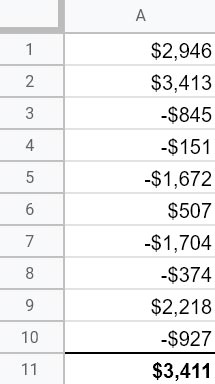Accurate bookkeeping is a vital part of owning and operating a successful business. Double-entry bookkeeping is the method that ensures accuracy. Think checks and balances.
While double-entry bookkeeping may sound tedious, you’re probably already doing it if you use accounting software or a bookkeeping service.
What is Double-Entry Bookkeeping?
Double-entry bookkeeping is a method where every financial transaction is recorded in at least two accounts. The double entry system provides a way to check the accuracy and to ensure that all entries are balanced. It also makes it easy to look back and find where an error may have occurred.
For example, suppose your company takes out a loan for $5,000. In that case, the cash (asset) account is debited with $5,000, and the outstanding debt (liability) account is credited with $5,000.
| Date | Details | Expense (Debit) | Income (Credit) |
|---|---|---|---|
| 29 Aug 2022 | Cash | 5,000 | |
| Loan | 5,000 |
Notice how the loan increases both cash and debt 👍
Record Twice, Balance Once
The fundamental accounting equation is Assets = Liabilities + Equity.
- Assets are the resources your business owns.
- Liabilities are debts you or your company owe creditors.
- Equity is the portion of business assets that are owned by shareholders.
In order for the equation to be balanced, the total assets must equal the total liabilities. Double-entry bookkeeping keeps the balance in check each time a transaction is recorded.
Differences of Single- and Double-Entry
Single-Entry Bookkeeping

Single-entry bookkeeping records the transactions of a business with just a single entry. It does not track assets or liabilities, and is susceptible to errors. Think of a single-column in Excel with positive and negative numbers (there’s nothing to balance).
Double-Entry Bookkeeping
On the flip side, double-entry bookkeeping records transactions in at least two accounts, as a debit or credit, for every transaction. A double-entry system requires that the amounts recorded as debits equal those recorded as credits.
A debit represents an increase in assets or total value and a decrease in liabilities or money owed. In contrast, a credit represents a decrease in assets and an increase in liabilities.
Who Uses Double-Entry Bookkeeping?
Double-entry accounting is used by businesses of all sizes and in all industries. One important reason is that it is the only bookkeeping method that adheres to Generally Accepted Accounting Principles in the United States (GAAP).
So, whether it’s a small or a large business using cash or accrual accounting, double-entry bookkeeping can be used since it provides a clear picture of income and expenses.
Double-Entry Bookkeeping Software
All modern accounting software, such as QuickBooks or Wave, relies on double-entry bookkeeping to keep your accounts balanced. While bookkeeping software has mostly merged debit and credit into a single-column format on the main dashboards, you can still find it if you run reports like a trial balance or view your general ledger.
Virtual bookkeeping combines the best parts of traditional bookkeeping and accounting software to give you an affordable way to outsource your bookkeeping duties.
5 Main Account Types
Double-entry accounting is generally classified as having at least two accounts in the accounting process. Business transactions can be classified into one of five accounts:
1. Asset Account
These accounts place a monetary value on the company’s items that provide economic value and future benefit. Asset accounts include inventory, cash, and accounts receivable.
2. Liability Account
These accounts contain information about expenses that have yet to be paid. Accounts payable, taxes payable, and notes payable are a few examples.
3. Equity
Equity refers to the company’s capital or ownership. Some examples of equity include retained earnings, common stock, and treasury stock.
4. Income Account
These accounts track the company’s or its assets’ revenue. Common examples of income accounts consist of gain on asset sales, sales revenue, and interest income.
5. Expense Account
These accounts detail the expenses incurred by the company. Utilities, advertising, and rent are a few common examples of expense accounts.
Final Thoughts on Double-Entry Bookkeeping
Taking your small business to the next level and ensuring its long term success is only possible if you have an accurate picture of the finances of the business.
Double-entry bookkeeping is essential for accurate accounting. Accounting software and bookkeeping services are the two easiest ways to get started.
